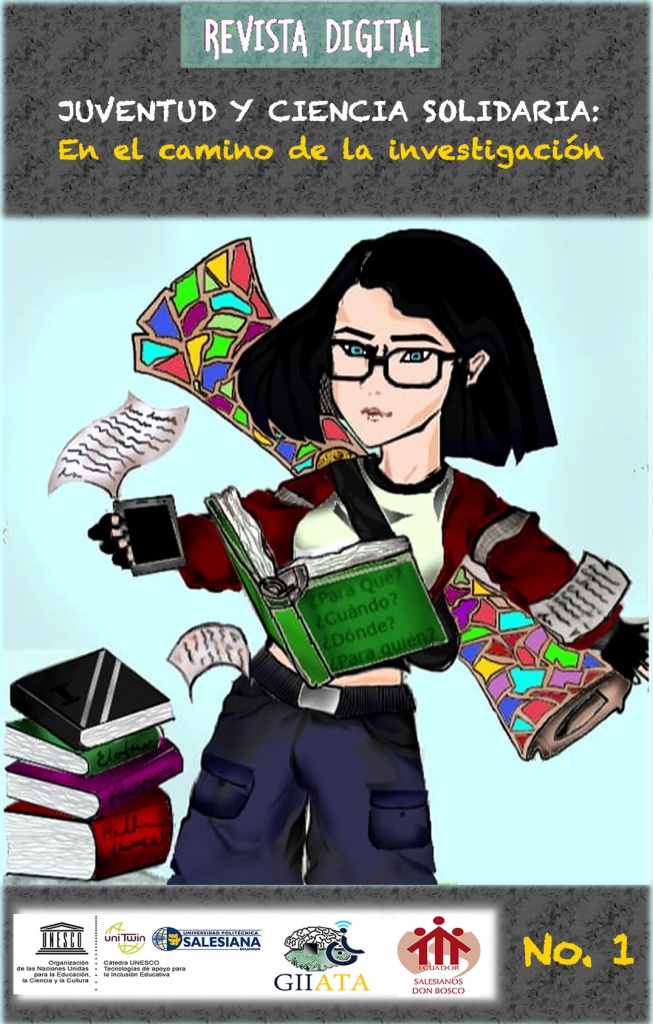Edición N°1 – Artículo 03
Medición de Dióxido de Carbono en ambientes de la Unidad Educativa Técnico Salesiano mediante la internet de las cosas (IoT)
Autor: Josué Morales M., David Padilla M., Daniela Parra S., Katherine Venenaula O. (Unidad Educativa Técnico Salesiano)
Resumen
El objetivo de este trabajo es medir el incremento de dióxido de carbono (CO2) y una temperatura en los ambientes del Técnico Salesiano para conocer si estos afectan a la salud y al desempeño de los estudiantes en las horas laborales de clases. Para lo cual se propuso la elaboración de un sistema de sensores, los mismos que medirán la concentración de CO2 y de la temperatura en un aula de clase determinada cada dos horas y mediante internet los resultados obtenidos se guardarán en una base de datos. El programa para el manejo de los sensores se realizó en JAVA. Para la protección del sistema eléctrico se diseñarán los planos de dos cajas que fueron impresas en 3D. También se elaboró una encuesta que fue aplicada a los estudiantes del Tercero “F1”. Como resultado de las encuestas se obtuvo que los estudiantes al estar expuestos a una mala ventilación del aula de clase sienten estrés y agotamiento. En la mayoría de los casos esto se debe a que la temperatura se incrementa y se concentra en un mismo lugar. Es necesario que los estudiantes se desarrollen en un ambiente adecuado para su salud y para la adquisición de nuevos conocimientos, por este motivo es conveniente reducir el incremento de la temperatura y CO2 en un aula de clases adecuándolas con ventanas grandes y así potenciar la concentración de los estudiantes.
Palabras clave: incremento, CO2, salud, sensores, temperatura, estudiante.
.
Abstract
The objective of this work is to measure the increase od carbon dioxide (CO2) and the temperature in the environments of the Técnico Salesiano to know if these affect the health and the performance of the students in the working hours of classes. For which it was proposed the development of a system of sensors, the same that will measure the concentration of CO2 and temperature in each classroom every two hours and through the internet the results obtained will be stored in a database. The program to manage sensors was developed in JAVA. For the protection of the electrical system, the plants of two boxes that were printed in 3D will be designed. A survey was also elaborated and applied to the students of the third year “F1”. As a result of the surveys, it was found that students feel stress and exhaustion when exposed to poor ventilation in the classroom. In most cases this is because the temperature increases and is concentrated in the same place. It is necessary that students develop in a suitable environment for their health and for the acquisition of new knowledge, for this reason it is convenient to reduce the increase of temperature and CO2 in a classroom by adapting them with large windows and thus enhance the concentration of students.
Keywords: increase, CO2, health, sensors, temperature, student.
Edición N°1
Fecha de publicación: 07 diciembre del 2018.
This work is licensed under a Creative Commons Attribution-NonCommercial-ShareAlike 4.0 International License.
The Universidad Politécnica Salesiana of Ecuador preserves the copyrights of the published works and will favor the reuse of the works. The works are published in the electronic edition of the journal under a Creative Commons Attribution/Noncommercial-No Derivative Works 4.0 Ecuador license: they can be copied, used, disseminated, transmitted and publicly displayed.
The undersigned author partially transfers the copyrights of this work to the Universidad Politécnica Salesiana of Ecuador for printed editions.
It is also stated that they have respected the ethical principles of research and are free from any conflict of interest. The author(s) certify that this work has not been published, nor is it under consideration for publication in any other journal or editorial work.
The author (s) are responsible for their content and have contributed to the conception, design and completion of the work, analysis and interpretation of data, and to have participated in the writing of the text and its revisions, as well as in the approval of the version which is finally referred to as an attachment.
- Parada, Peschard, Vera, Zúñiga. (2017). Guía APS.Atención Primaria en Salud. México: Intersistemas.
- William N. Keyell. (1993). Medicina interna. Buenos Aires: Panamericana.
- J. Krishnamurti. (1994). 1. En Talks whit American Students(168). Buenos Aires, Argentina: Kier, S.A.
- Alfredo Pascual. (2013). Dos millones de razones para saber qué es exactamente Raspberry Pi, de El Confidencial Sitio web: https://goo.gl/Rz8WZ1
- CyrilTHIBAUD. (2006). Presentaciòn de MySQL. En MySQL 5. Barcelona: EDITIONS ENI.


